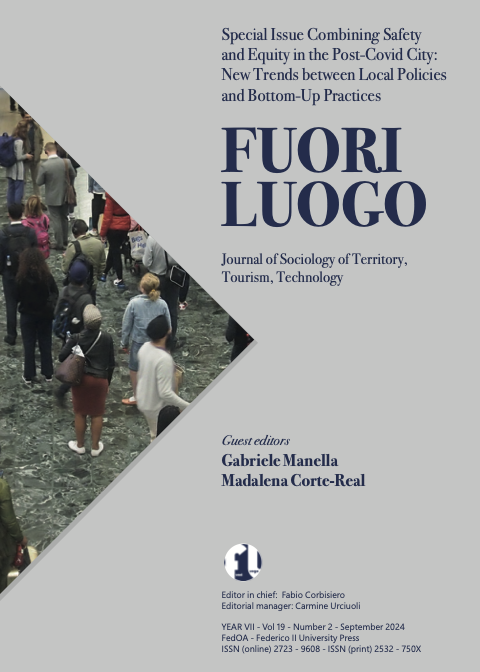Italian Cities Looking for a New Normal: Economic and Social Opportunity between Reality, Perception and Hopes
Abstract
As has been pointed out, the ongoing pandemic had a profound impact on both the urban landscape of cities and the consumption patterns of residents, city users, and tourists. This led to changes in the lifestyle of users and in the use of spaces. Indeed, the pandemic months have transformed how people work, study, travel, spend leisure time, and, in general, live and plan for the future. Furthermore, the availability of living space for each household, the necessity to accommodate various activities and requirements within the same space, and the available technological resources are three variables that have significantly shaped the quality of life during the social distancing measures imposed by lockdowns.
Nevertheless, with the gradual easing of COVID-19 restrictions since the second quarter of 2021, there has been a gradual return to pre-pandemic routines, leading to a rejuvenation of urban areas and to urban rebirth. This notion encompasses the process of revitalization, renewal, and transformation that numerous cities have undergone in the aftermath of the global health crisis.
This paper presents findings from a research project titled "The Rebirth of Cities as an Economic and Social Opportunity: Realities, Perceptions, and Hopes," which focuses on the analysis of 100 face-to-face interviews conducted with merchants, entrepreneurs, and managers of commercial, leisure, and workspace establishments scattered throughout Milan's urban area. Many of these commercial activities can be described as hybrid spaces, multifunctional environments that integrate different activities, often providing opportunities for engaging in nonprofit cultural pursuits.
The interviews, conducted in November 2021, following a period in which Milan experienced the resurgence of a vibrant summer season marked by the return of tourists, including international visitors, and the revival of numerous institutional events, reveal a positive attitude toward the future.
The analysis highlights: 1) the desire to innovate; 2) the willingness to draw insights from the negative experience of the lockdown in order to improve the quality of the offered services also thanks to the adoption of social media; 3) the willingness to improve the established relationship with the inhabitants and the public and private institutions of the neighborhood.
Downloads
Copyright (c) 2024 Ariela Mortara, Rosantonietta Scramaglia

This work is licensed under a Creative Commons Attribution 4.0 International License.




